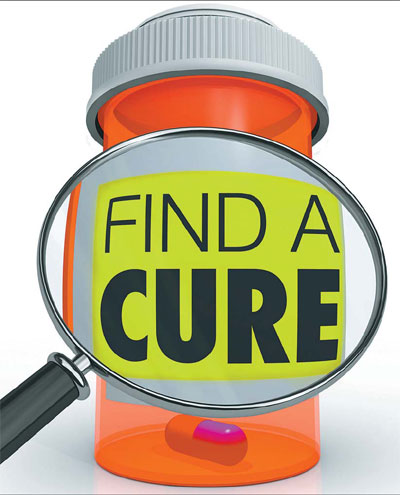A medical revolution in the making
Updated: 2011-12-21 10:23
(China Daily/Agencies)
|
|||||||||

Making cancer cells that thrive under laboratory conditions could herald a significant advancement in treating the disease.
US researchers said on Monday they have discovered how to keep tumor cells alive in the lab, generating buzz in the scientific community about a potential breakthrough that could transform cancer treatment. Until now, scientists have been unable to make cancer cells thrive for very long in the laboratory in a condition that resembles the way they look and act in the body. Doctors have largely relied on biopsied tissue that is frozen or set in wax to diagnose and recommend treatment.
The advance has sparked new hope that someday doctors may be able to test a host of cancer-killing drugs on a person's own tumor cells in the lab, before returning to the patient with a therapy that is likely to be a good match.
"This would really be the ultimate in personalized medicine," says lead author Richard Schlegel, chairman of the department of pathology at Georgetown University's Lombardi Comprehensive Cancer Center.
"The therapies would be exactly from their tissues. We would get normal tissue and tumor tissue from a particular patient and specifically match up their therapies," Schlegel says.
"We are really excited about the possibilities of testing what we can do with this."
The method, described in the online edition of the American Journal of Pathology, borrows from a simple method used in stem cell research, experts say.
Lung, breast, prostate and colon cancers were kept alive for up to two years using the technique, which combines fibroblast feeder cells to keep cells alive and a Rho kinase (ROCK) inhibitor that allows them to reproduce.
When treated with the duo, both cancer and normal cells reverted to a "stem-like state", Schlegel says, allowing researchers to compare the living cells directly for the first time.
The two elements have previously been used separately in stem cell research, according to Yale University pathology professor David Rimm, who wrote a commentary that accompanies the article.
"No individual technique was new, as far as I know. It was in some sense a very clever combination that led to this success," Rimm says.
Rimm cautions that more labs need to show they can do it, too, and that attempts to try different therapies to kill the cancer cells are just "speculation" now, but described the initial results as "pretty compelling".
"One of my senior scientists went down to Georgetown for a week, and she got it to work. She got pancreatic cells to work, which is impossible. Even they were having trouble with that one," he says.
"So that just further served to stoke my enthusiasm, rather than generate skepticism."
If other scientists can replicate the technique - and three university labs in the United States are already working on it - the advance could herald a long-awaited transformation in the way cancer cells are studied.
The study was published after two years of research in collaboration with National Institutes of Health scientists and was funded by the NIH, the Department of Defense, Georgetown University and the National Cancer Institute.
"A tumor from one patient is different from a cancer from another patient, even though they appear to be the same under a pathologist's microscope, and really that is one important reason why so many clinical trials fail," says Marc Symons, investigator at the Center for Oncology and Cell Biology at The Feinstein Institute for Medical Research in Manhasset, New York.
"I think it is fair to say this may revolutionize the way we think of cancer treatment," adds Symons, who was not involved in the study.
Cancer is the leading cause of death in the world, killing 7.6 million people in 2008, according to the latest data from the World Health Organization.
Mark Friedman, who works in the department of pathology at St. Luke's Roosevelt Hospital, says the real gain for patients could be reducing the harmful effects of chemotherapy that may not be suited for various tumors.
"This would be a tremendous benefit for the patient because you would be minimizing toxicity while maximizing the benefit of the treatment," says Friedman, who was not part of the study.
Karen Anderson, of the Biodesign Institute at Arizona State University, was one of the scientists who recently completed training in the method at Georgetown. She says the process took three days to learn.
"It is actually surprisingly straightforward ... I am optimistic about it, but we have to confirm whether or not the cells that are growing are really going to be the things we want to be able to study," she says. "But I think it is pretty exciting."











